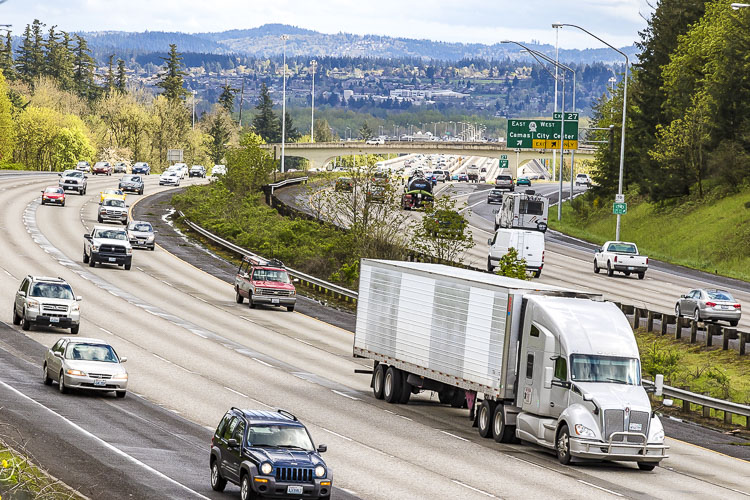
Stalinist Albania allowed only communist officials to have wheels
Art Moore
WND News Center
A World Economic Forum leader has cheerfully told younger people they can look forward to a future in which they will own nothing and be happy.
So it’s no surprise that giving up private cars – an icon of American culture symbolic of the nation’s spirit of independence and distinctive upholding of individual rights – will be one of the many adjustments people will have to make to save the planet and create a glorious future, according to WEF.
“The average car or van in England is driven just 4% of the time,” which is “not at all resource efficient,” argues Winnie Yeh, who is described as WEF’s “lead” for “responsible sourcing.”
“More sharing can reduce ownership of idle equipment and thus material usage,” she writes in an article published on WEF’s website that was spotlighted by the Gateway Pundit.
She points out that “car sharing” internet platforms such as Getaround and BlueSG allow people to rent vehicles on an hourly basis.
All of this, she said, is “part of broader transition from ownership to usership.”
Back to the future
If, ultimately, nations choose to ban private car ownership outright, it wouldn’t be the first time. Albania’s Stalinist regime did not allow citizens to own cars during its half-century of tyrannical rule.
In 1988 – as the Communist Party’s grip on power eased slightly after the death of its founding dictator, Enver Hoxha – an Albanian official told the Christian Science Monitor the government still did not “want to start private ownership of cars.”
“We cannot afford it, and it would create too big social differences,” he said.
The communist dictatorship officially ended in December 1990, and with it the ban on car ownership.
Peter Lucas – who became the first American reporter to visit Albania in 30 years when he landed in the capital Tirana in 1986 – wrote a column recalling his experience as Sen. Ed Markey, D-Mass., and Rep. Alexandria Ocasio-Cortez, D-N.Y., were announcing their “Green New Deal” plan in 2019.
The Albania he witnessed in the 1980s “was their Green New Deal come true,” he wrote.
“There were no cars in Albania. You could not own one, buy one, rent one or steal one.”
The exception was vehicles owned by the government, and Lucas said that on rare occasions he saw a dark limousine with shaded windows speeding down the main boulevard in Tirana.
“Fearful pedestrians would surmise that the limo carried Communist Party big-wigs, the only privileged people who had access to cars and chauffeurs,” he wrote.
Lucas pointed out that “the lack of access to cars meant that in the Albanian police state the people could be watched easily.”
“You could travel only so far by donkey or by bicycle.”
Also read:
- Clark County beginning installation of upgraded traffic signals in mid-AprilClark County will begin upgrading multiple traffic and pedestrian signals in mid-April to improve safety, accessibility, and transportation technology.
- Can $10 tolls be coming to the Interstate Bridge?Rep. John Ley examines a proposed Washington House bill that would double borrowing for the Interstate Bridge Replacement and potentially lead to high tolls affecting Southwest Washington drivers.
- Overnight full closure of I-5 in north Clark County for utility work, April 13Both directions of I-5 in north Clark County will be closed early Sunday morning, April 13, for utility work involving overhead power line relocation.
- Opinion: The stage is set for a battle royaleRep. John Ley outlines key legislative battles in Olympia, raising concerns about tax hikes, tolling, and spending priorities in Washington state.
- Inflation worries drive WA lawmakers to jack up I-5 bridge borrowing plan by $900MLawmakers in Washington have added $900 million to their borrowing plan for the I-5 bridge replacement, drawing opposition from Rep. John Ley.










Maybe they could also give up their gated homes and lean on throwing out their $20 pint Ice Cream!
No one in the USA is going be happy giving up their autos and BE HAPPY- WHILE THE WEALTHY ARE RIDING AROUND IN LIMO’S AND FLYING IN THEIR PRIVATE AIR PLANES.
You can whistle past the graveyard all you want, but keep your compact ICE car in good running order, because its replacement will be nosebleed expensive to buy and ruinously costly to operate. Gasoline will be $10/gallon (constant dollars) soon, simply because cars don’t wear out very quickly these days, and there were 80 million of them added to the global fleet in 2021, a “down year” because of Covid. Twenty-seven million were crushed, for a net gain of 53 million. In ten years that will be 530 million. There is almost no “slack” in the worldwide refining capacity now with 1.4 billion cars on the road. Where will there be new refining capacity for a 35% increase in ten years.
Sure, all 530 million aren’t going to be ICE cars. Each year a greater and greater proportion will be electric [though the starting percentage is pitiable], so lets be optimistic and cut that in half for a net gain of 265 million cars or 17% more.
It’s fundamental economics that when production is flirting with the functional limits to it — whether input shortages or manufacturing capacity — prices begin to follow hyperbolic curves. So that $10/gallon is going to be arriving soon.
And the Lithium and other metals needed for the batteries for those EV’s will be ever more expensive, too.
You can prance and preen about “an American culture symbolic of the nation’s spirit of independence and distinctive upholding of individual rights” and probably successfully stir up the rubes for a couple of election cycles.
But you can’t avoid the grim reality of resource limitations and the rapid waning of the power of the “Fed put”.